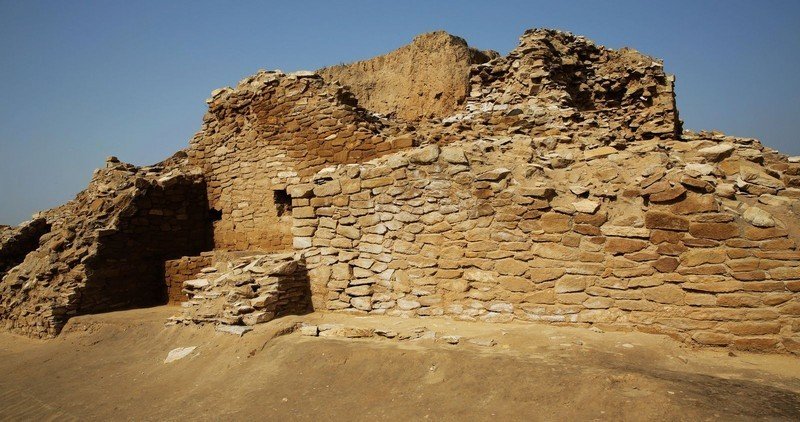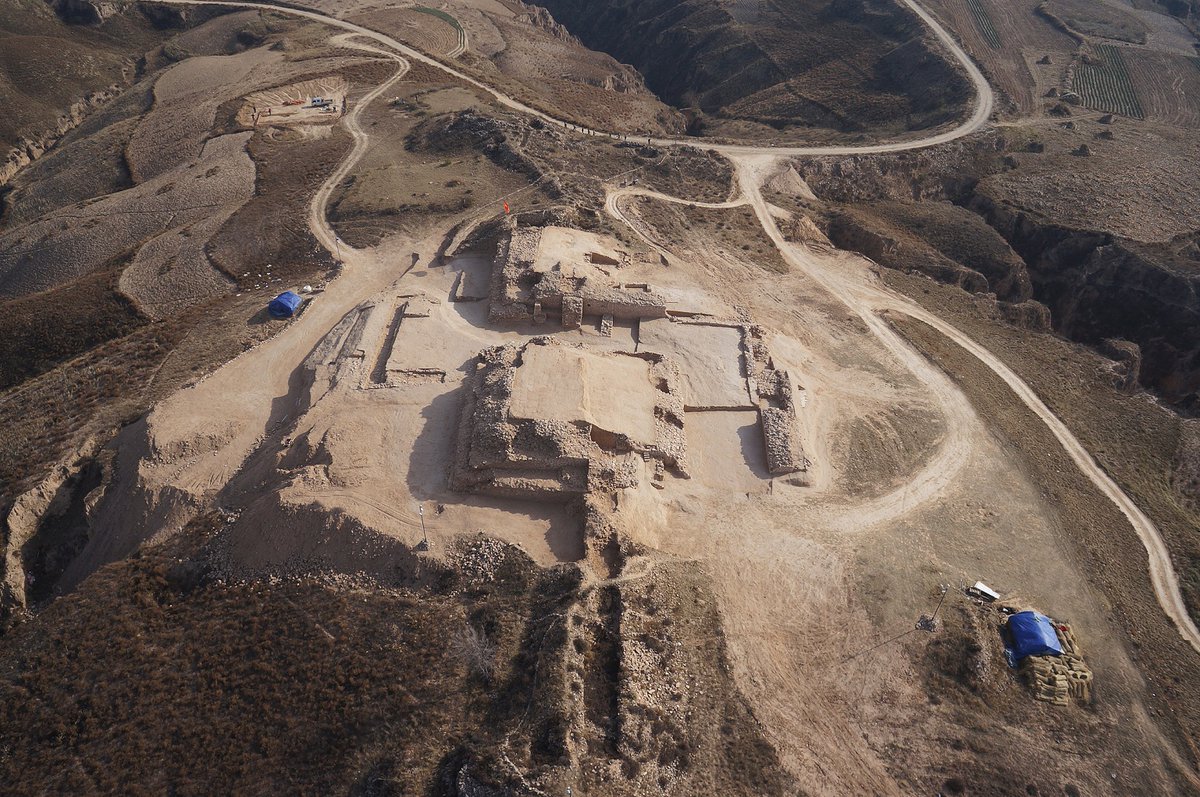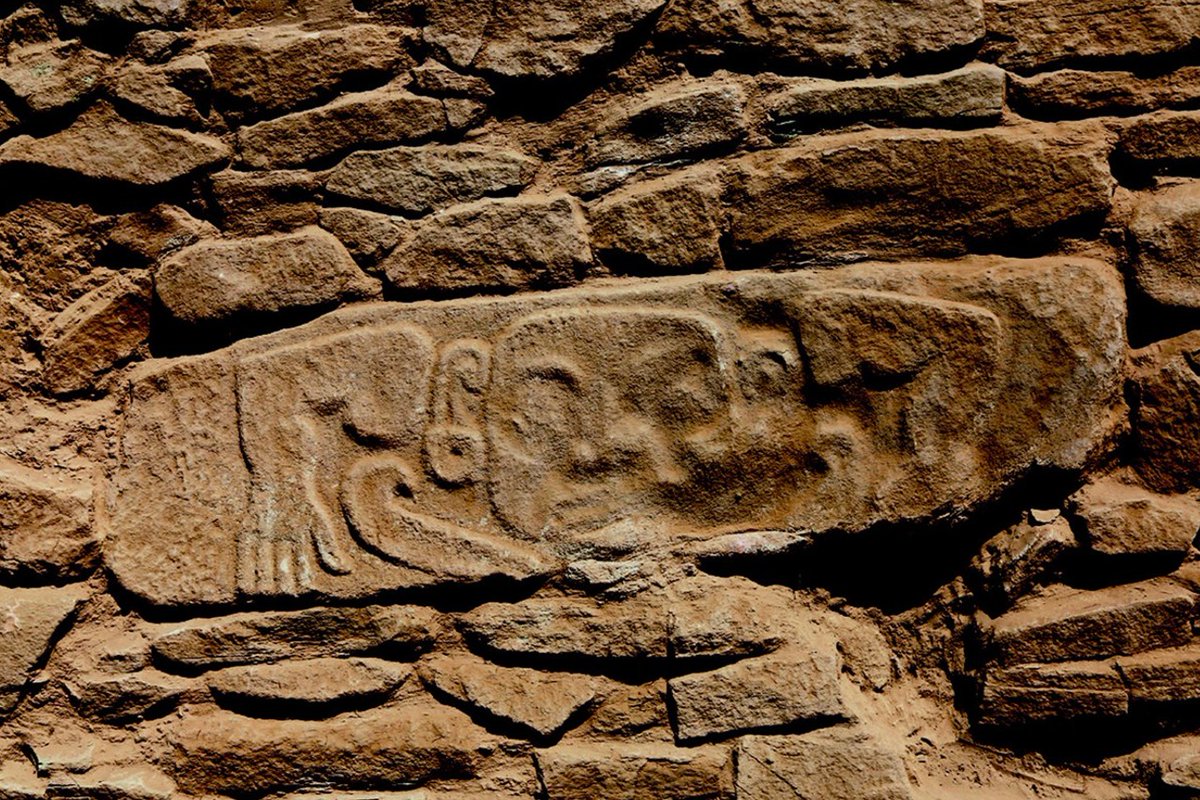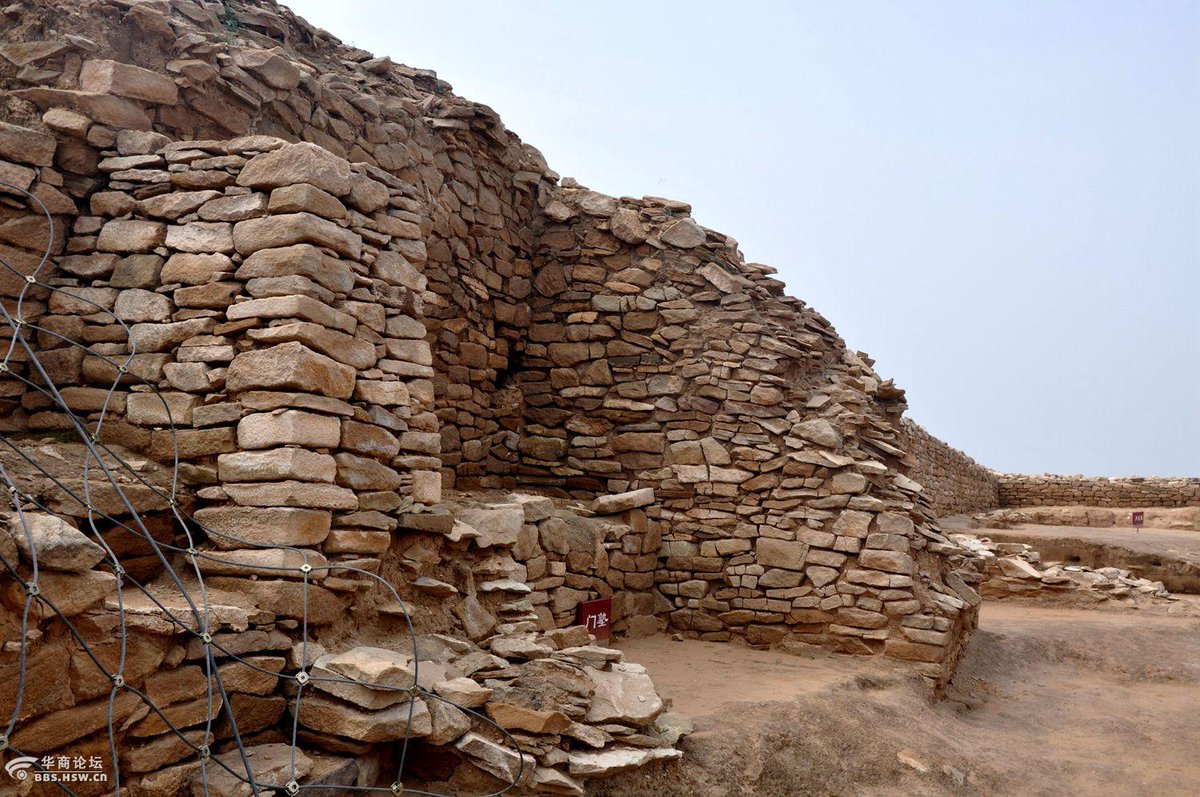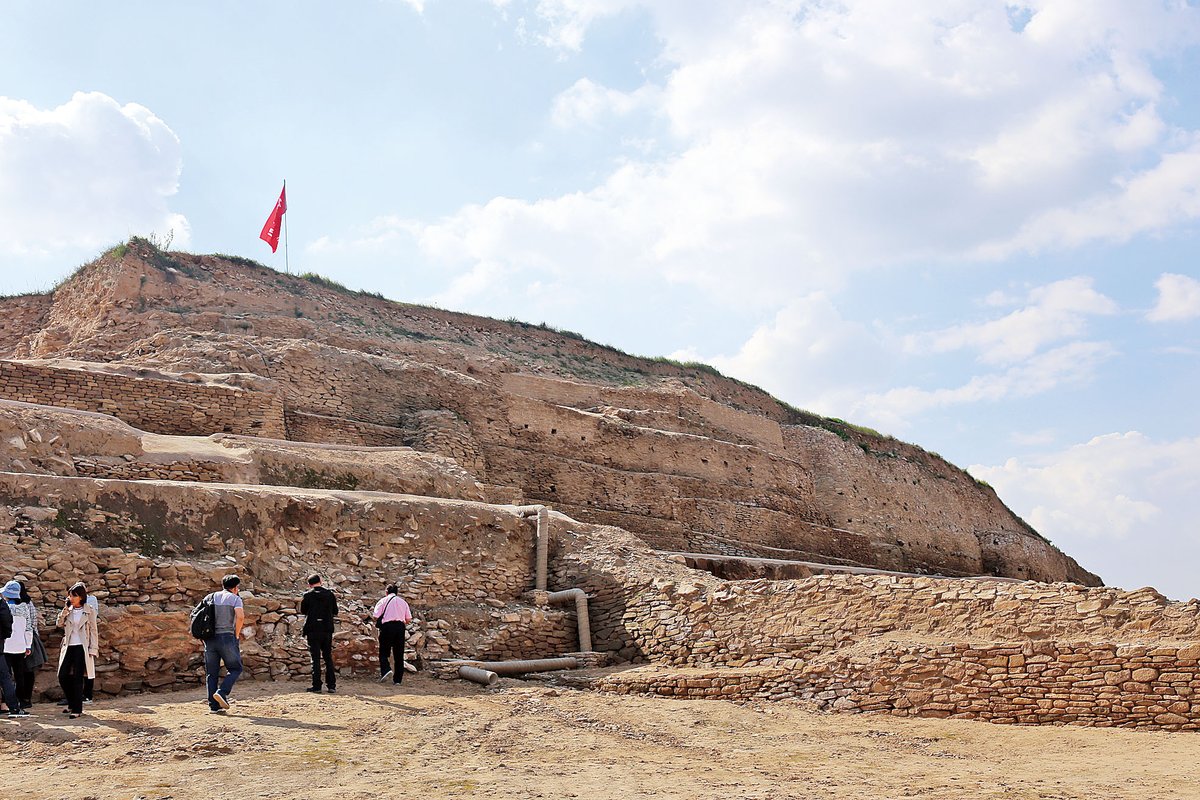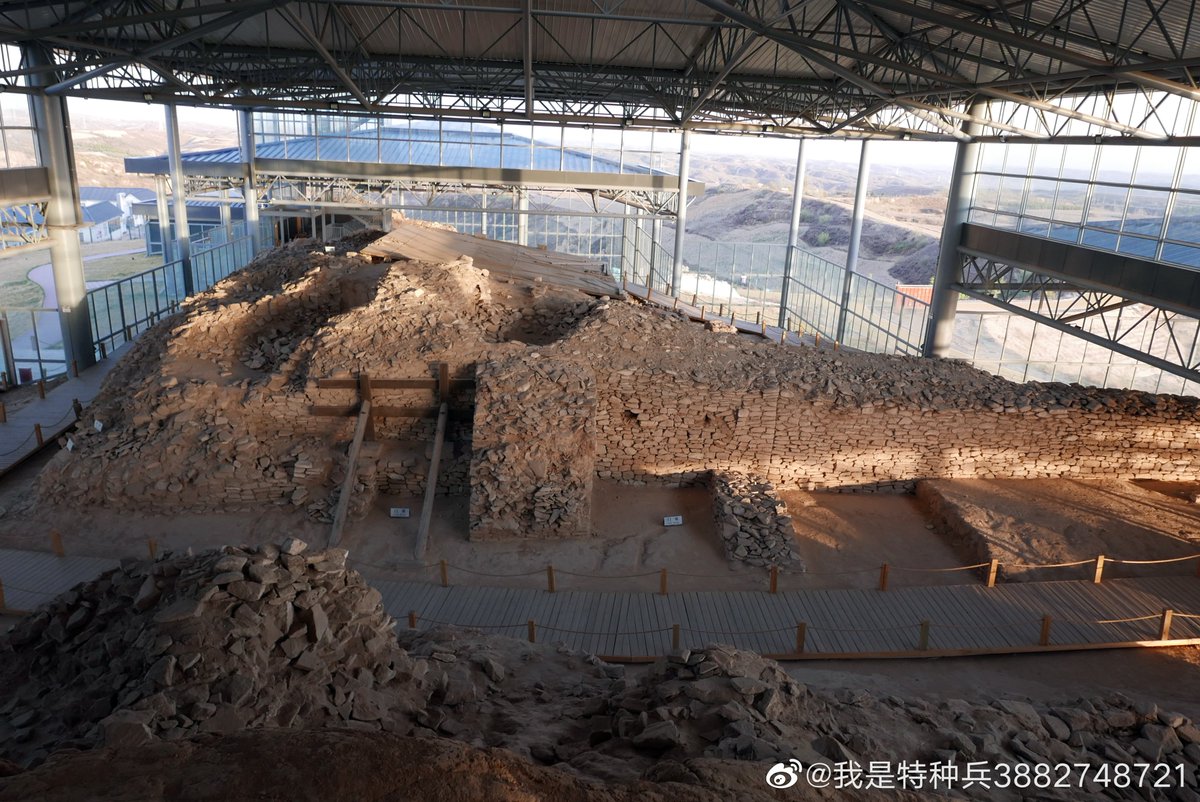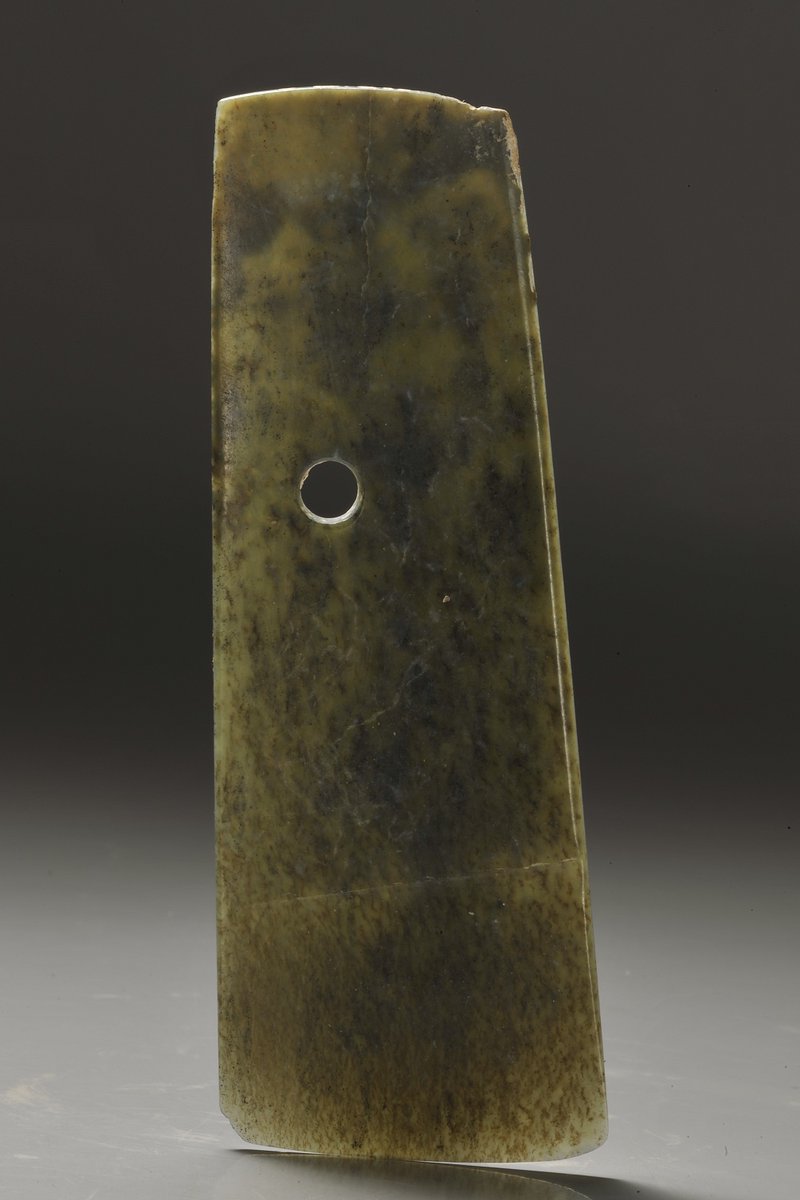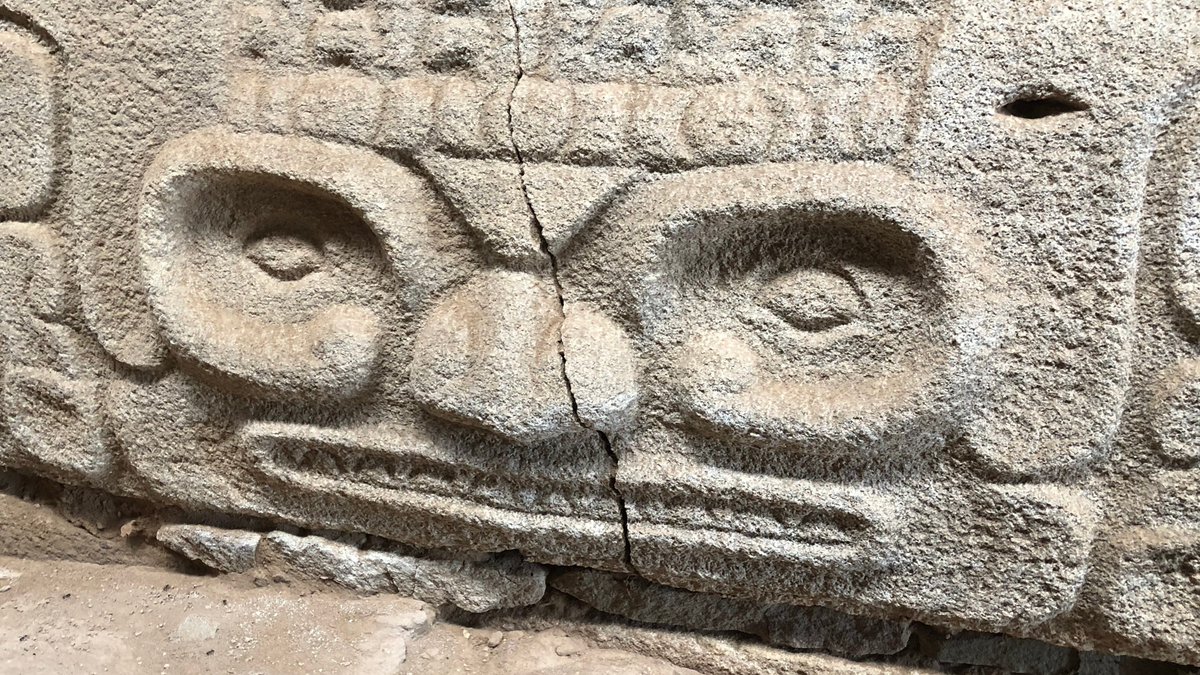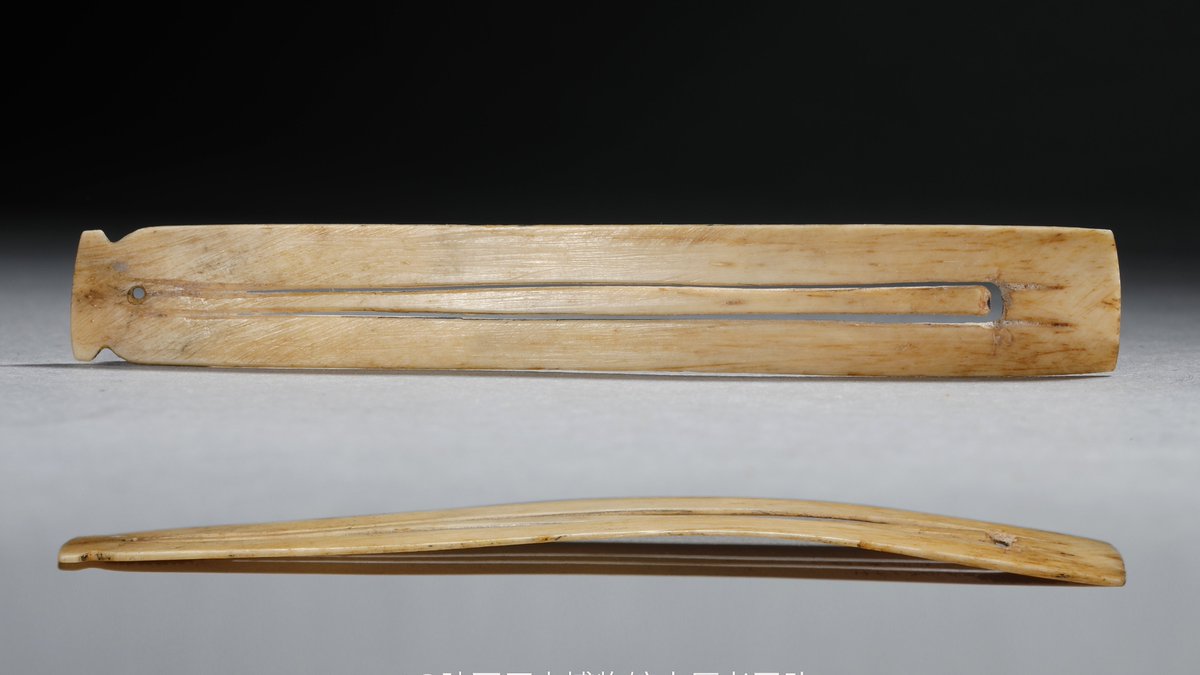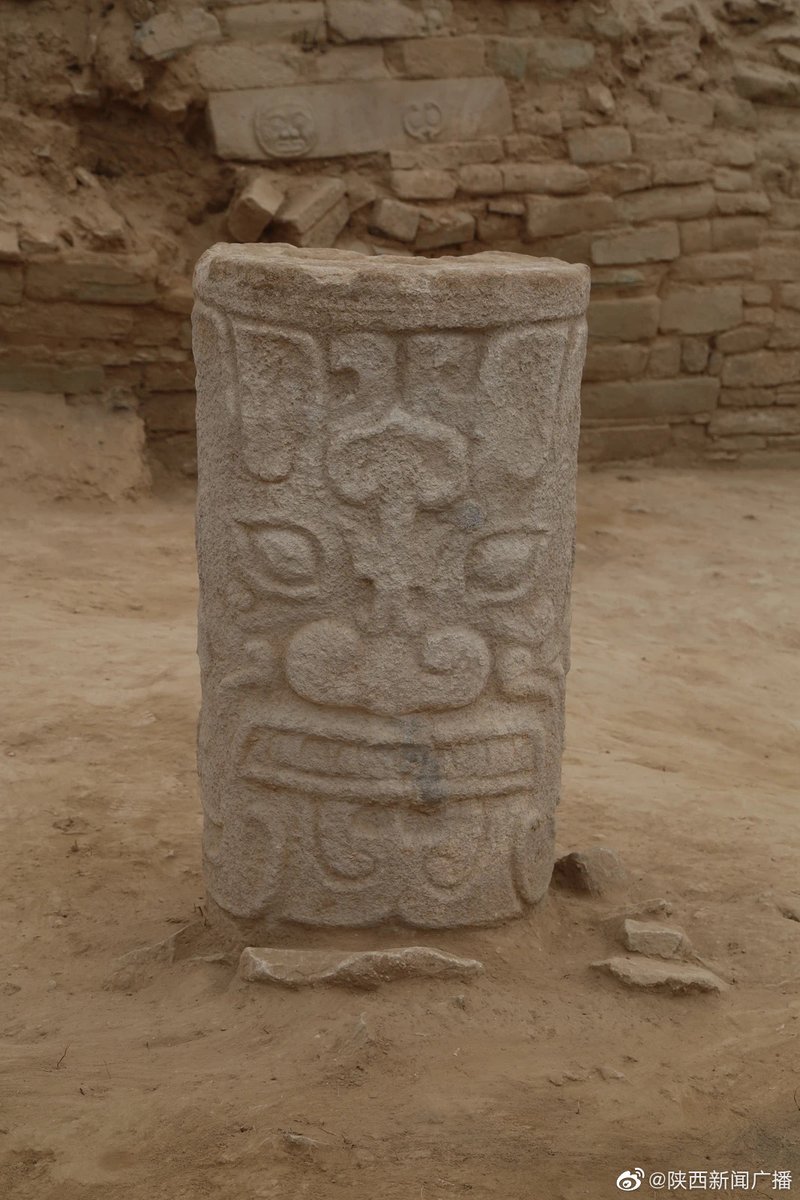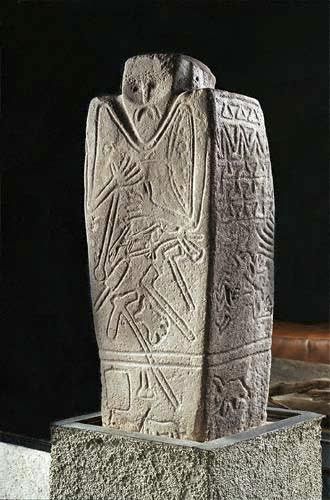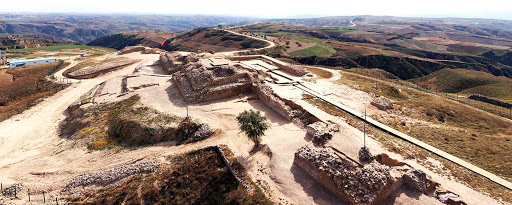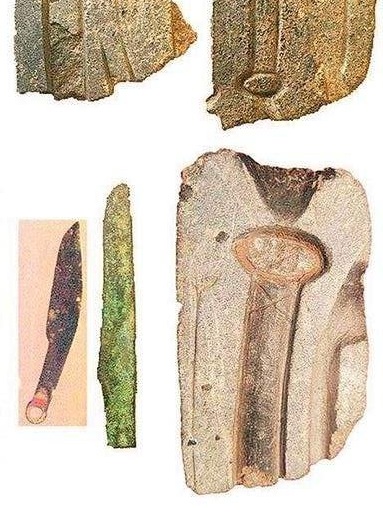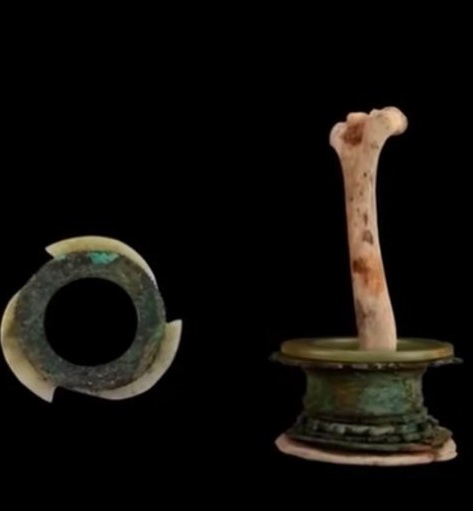What have been excavated at Shimao in Shaanxi over the past decade are perhaps more significant than the terracotta army of the First Emperor. The magnificent 4000-year-old city, built mostly of stone, challenges many conventional notions about the birth of Chinese civilization.
1. As Ralph E. Turner puts it, "almost nothing is known about Chinese architecture before the age of Qin (3rd c BC)," because dominant building materials had been rammed earth &timber. But at Shimao, we see a stone city with monumental structures which look like stepped pyramids.
2. Shimao reveals a lost culture that seemed to have the most advanced building & manufacturing techniques of the time, highly sophisticated ritual& artistic activities. However, it is located far away from the Central Plains where Chinese civilization has been assumed to emerge.
3. Such stone construction & carvings (L) had no parallel in any parts of China, but recall those produced by Indo-European Kurgan culture (R). In fact, the city is on the eastern edge of Eurasian steppe, which served as a highway between East Asia & Europe in the ancient times..
While the terracotta soldiers suggest contacts between China &the rest of Eurasian world at the beginning of the imperial age, the Shimao city might show such contacts already started at the very beginning of Chinese civilization. Let& #39;s look forward to more findings from the site
Some related readings:
https://www.cambridge.org/core/journals/antiquity/article/when-peripheries-were-centres-a-preliminary-study-of-the-shimaocentred-polity-in-the-loess-highland-china/EA48B7FEF5512D41D615DC3480DE0DDC
https://www.cambridge.org/core/jour... href=" https://www.livescience.com/63406-massive-shimao-pyramid-unearthed-china.html">https://www.livescience.com/63406-mas... https://www.news.com.au/technology/science/archaeology/pyramid-of-eyes-discovered-at-heart-of-4300yearold-city-in-northern-china/news-story/c14aca02eb9c06f620cf938d5cefddfe">https://www.news.com.au/technolog...
https://www.cambridge.org/core/journals/antiquity/article/when-peripheries-were-centres-a-preliminary-study-of-the-shimaocentred-polity-in-the-loess-highland-china/EA48B7FEF5512D41D615DC3480DE0DDC
Forgot to mention these stone molds for casting bronze blades & bronze/jade composites; they illustrated the transition from stone to bronze age. For many archaeologists, these finds clinch the theory that bronze technology spread from West Asia to China through the steppes.
National Geographic article on Shimao: https://www.nationalgeographic.co.uk/history-and-civilisation/2020/08/mysterious-carvings-and-evidence-of-human-sacrifice-uncovered-in">https://www.nationalgeographic.co.uk/history-a...

 Read on Twitter
Read on Twitter